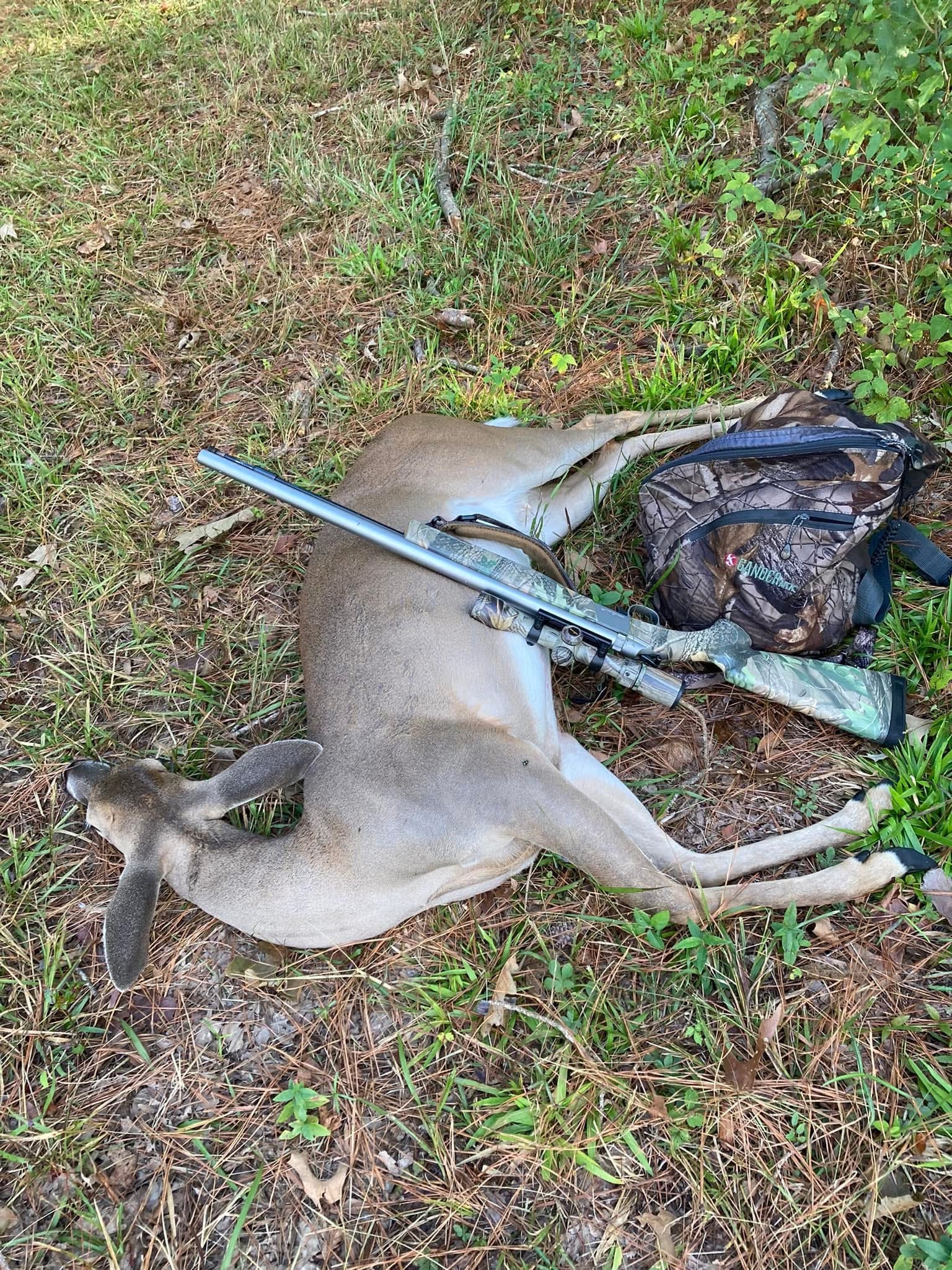The forest was alive, every rustle and birdsong heightening my senses. After what seemed an eternity of waiting, my heart quickened as I caught sight of a deer moving gracefully through the brush – a flick of an ear, a twitch of the tail. Each time the deer’s head dipped out of view, I shifted my position, preparing for the perfect shot. When I saw a clear view of the deer I knew this was the moment. I steadied my breathing, released the safety, and focused through the scope. When the moment came, I whistled sharply and the deer froze. My scope framed a clean shot to the heart and lungs, and with steady hands, I squeezed the trigger gently, then held my rifle in place.
The crack of the shot shattered the quiet. Adrenaline surged as I worked to calm my nerves. I spent more than a few minutes frozen intime as I captured the details of the shot, listened for movement and sound, and found an identifiable landmark that would lead me to where the deer was standing.
I then unloaded my gun and used a haul line and safety rope to descend from my stand. After reloading my rifle, I slowly approached the spot where the deer had stood. Evidence was clear—a tuft of hair on the ground and droplets of blood leading into the woods. The deer was nowhere to be seen, but now I know I didn’t miss! I marked the site with a square of toilet paper and returned to my stand.
Patience is key. I gave the deer time to expire, knowing haste would lead to unnecessary distress for the animal and difficulties in tracking. After what felt like an eternity, I resumed the search, following the blood trail with deliberate care. I looked for blood, broken or crushed foliage, dirt that had been recently disturbed. Looking both on the ground and on the brush and occasionally having to get on my hands and knees to find small droplets of blood, I marked each sign of the animal’s movement with another piece of toilet paper. For the most part, I found that the deer travelled the path of least resistance. But twice, I had to circle back to retrace its path only to find that it had veered direction. Once it reversed course before making a turn! This is why it’s crucial not to disturb the trail, as every detail provides clues to its next steps.
Ahead in the brush, I spotted the unmistakable flash of white – my heart raced. Knowing that safety is key—I was to make no sudden movements or noises that would startle a wounded animal – I approached slowly, pausing to watch the deer. I watched and waited, looking for any movement: rise and fall of the chest, twitching of a leg or eyes blinking. I knew that its eyes should be open and develop a dry, cloudy appearance if it had expired. I tossed a stick in its direction to see if I saw any reaction. Once satisfied that the deer had expired, I tagged the deer as required by law, honoring the ethical practice of the hunt, then excitedly texted my hunting buddies! The final step was field dressing—a task performed with respect and gratitude. It’s more than preparation; it’s an acknowledgment of the cycle of life and the sustenance this animal provides. This wasn’t just a shot; it was a story – a chapter in my bond with the wild.
